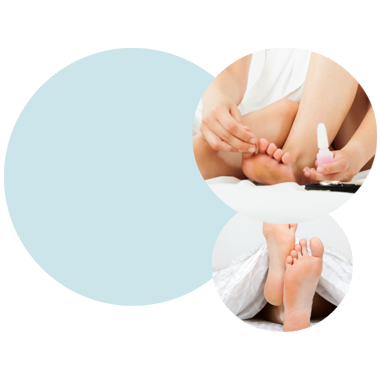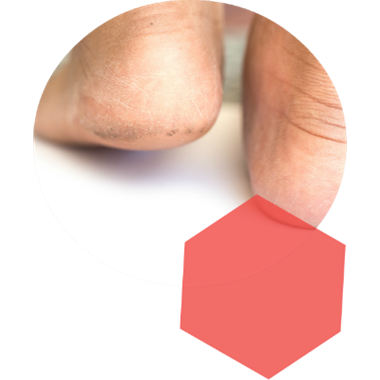Knowing about hard skin (also known as calluses) is important – especially if they’re giving you trouble. Find out our top five facts about the right hard skin treatment in this guide.

It may just be a build-up of hard skin but it can be uncomfortable!
The skin on our feet may not be as delicate as that on our faces, for instance, but it can only take so much pressure. Naturally, the skin has to toughen (forming keratosis) to defend the foot’s structure and its own health. However, excessive intermittent pressure over a period of time, or repeated friction, causes the skin to thicken too much, also known as hyperkeratosis.
Hard skin tends to form in two particular areas of the foot
While calluses can also form on the hands, they’re most frequently found on the ball or heel of the foot. The ball of the foot takes the majority of your weight when walking or standing, and the heel is often subject to rubbing from ill-fitting footwear.
Regularly remove your hard skin
We all get some hard skin, however some people tend to get more thickened hard skin while others don’t. The key to it not becoming a painful problem is to make sure it doesn’t build up over time. Check your feet weekly and file away excessive hard skin for example with an electronic hard skin remover like the Amopé Pedi Perfect™ Electric Foot File with Diamond Crystals.
Keep your feet moisturized
If your feet feel dry, treat them with a salve or moisturizer, such as the Amopé Pedi Perfect™ Daily Moisturizer Foot Cream. To optimize the effect, apply after you’ve had a bath or shower, when the skin will be softer and more absorbent
Is it a corn? Is it a callus?
They can look similar but calluses are oval-shaped, with a thickened and yellowish appearance. They also produce a burning sensation – more discomfort than pain – whereas corns give a sharp pain because the hard nucleus presses against nerve endings. So, is there a solution? In terms of prevention, getting the right fit in your footwear is crucial. Make sure you have room between your big toe and the tip of the shoe and consider shoe shopping later in the day, when your feet will be at their biggest – they tend to swell through the day as you walk.
http://www.nhs.uk/Conditions/CornsandCalluses/Pages/CornsandcallusesPrevention.aspx



